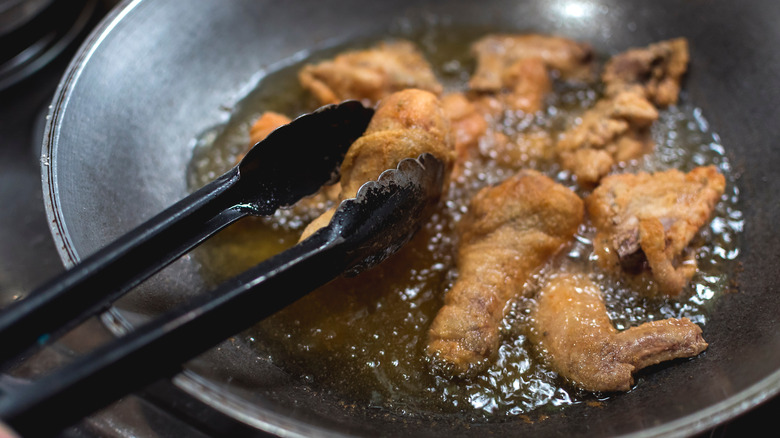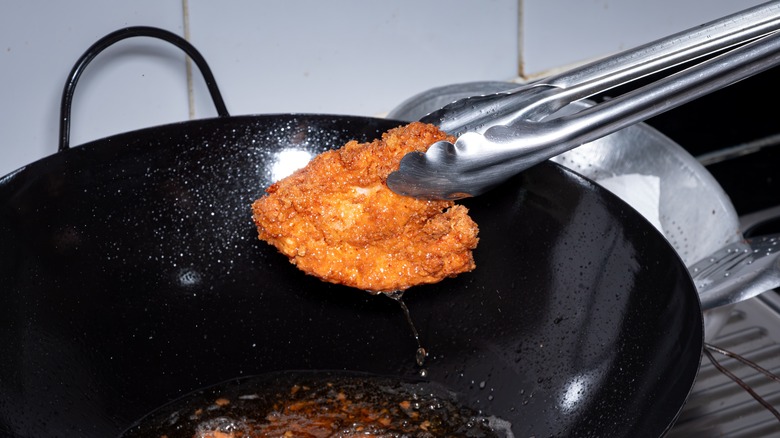The Reason You Should Consider Using A Wok For Deep Frying
Fried foods like chicken tenders, onion rings, and mozzarella sticks are delicious indulgences for most of us, but frying at home can create quite a mess in the kitchen. Deep pots and Dutch ovens are the most commonly used stand-ins for deep fryers, but both require a lot of oil. And, unless you have a splatter screen, frying in these will likely get oil drops all over your stove. That's why we think you should consider using a wok for your deep frying needs.
Sure, a wok is usually used for cooking dishes like fried rice and stir fry, but that doesn't mean you have to limit yourself to only these applications. Most woks are made out of aluminum, cast iron, or steel — all materials that can withstand the high temperature of bubbling oil. Woks are also deeper than traditional pots, so there will be fewer oil splatters to clean up. What's more, a wok's flared shape and depth provide more room to fry foods. That depth also means that less oil is required than if you were using a Dutch oven.
Deep frying in a wok
You can deep fry any food in a wok that you would in a deep fryer, Dutch oven, or other pot. The amount of oil needed varies by recipe, but you certainly won't have to fill the wok to the brim. In fact, many sources claim that woks use around 33% less oil than other cookware, like Dutch ovens, when frying. Your best bet is to start with just two to three inches of oil. The oil will also be ready quicker because you're using a smaller amount — another advantage to deep frying in a wok. To make sure it's hot enough for deep frying, use a candy thermometer to check the temperature, which should be between 350 and 375 degrees Fahrenheit.
Still, deep frying can be a messy business. So, how do you clean a wok after frying food in it? First, let the oil cool. It's a good idea to refer to the instructions from the manufacturer of the wok, because every style and material has different needs. If it's a cast iron or carbon steel wok, for example, you'll need to use a specific cleaning method to avoid losing its vital seasoning. Woks made out of aluminum or stainless steel can be cleaned using paper towels to soak up the oil. Don't pour oil down the drain, as this can wreak havoc on your plumbing. After the oil is removed, soak the wok in hot water, then clean it with a sponge or washcloth before thoroughly drying and storing it.

